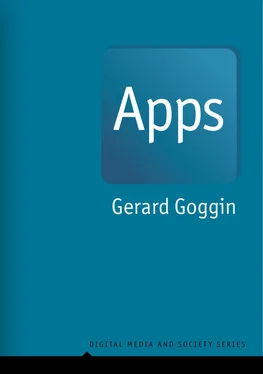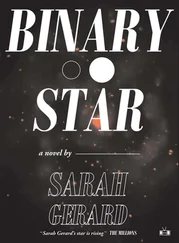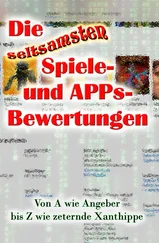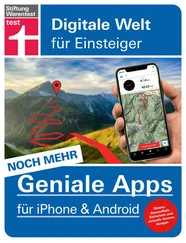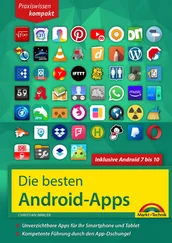The Apps Pivot in Digital Media and Society
To make sense of the heady career of apps, I advance five key arguments in the chapters that follow.
First, as elaborated in chapter 2, I discuss the fundamental identity of apps as a kind of software. Like all software, apps have a relationship—and are in dialogue—with the hardware that their code operates as well as with the environments in which both the software and the hardware are situated. While apps have enormous variety and flexibility, they also operate within distinct constraints. Within these limits, apps offer an important bridging of digital media and society: they provide fabric for the sociotechnical systems and infrastructures that characterize many digital societies, as these have taken shape in recent years and are evolving toward the future.
Second, apps are often excitedly promoted as paving the way for wonderful kinds of innovation, woven together with new kinds of economics business models, which typically involve the catchall notion of entrepreneurship. Yet such apparently limitless potential is clearly offset by the fact that apps exist within systems of value, power, and control. At various levels, especially at the level of their construction, design, and affordances, apps constrain their users just as much as they enable them, if not more. Apps often channel their users, uses, and meanings into distinct social relations, economies, and politics. This is the argument I make in chapters 3and 4, which trace the political and cultural economy of apps, their implication in geopolitical shifts, and the creation of new infrastructures and forms.
Third, in an extraordinarily creative way, apps are pivotal to a teeming field of media innovations; this is something I discuss in chapter 4. App media build on many of the aspects of computers, software, and code applications before the smartphone era. Since the early 00s at least, and indeed well before the turn of the century, apps as media have supported, framed, and mediated our contemporary developments centered on data, algorithms, machine learning, and AI. Taking a wider view still, it is remarkable how apps have been crystallized and have driven innovations across a very wide range of media. In part, these app media innovations have to do with interactions and development in social life and technology that center on the rise of various digital media forms—games, video sharing and streaming, camera, images, visuals, text, language, messages, sound, audio, music, voice, and so on. A reflex focus of many actors in these process as well as of commentators has often been on the app itself: its design, development, marketing, user acceptance, and viability. However, the app is often just the tip of the iceberg. The app helps create a new media form, but it does so as a portal, entry point, or strategic node in a larger system and assemblage.
Fourth, for better or worse, apps function as social laboratories; this is the subject of chapter 5. Apps are fabrics that help media stretch into new shapes, and they also expand our ideas of what functions media can perform. The myriad media of apps infiltrate everyday life in new ways. All around the world, apps have been seized or used to make do as resources for projects of social change. They can be pivotal in infrastructures that underpin political, social, and cultural change. The social laboratories of apps operate at a huge range of scales, which run from the small worlds of our ordinary lives through the meso levels of organizations, institutions, subcultures, communities, and publics to the macro levels of national, regional, and global settings.
Fifth, because of characteristics of apps outlined in these four arguments, we need to talk about apps and take their functions, implications, and potentials seriously, yet skeptically. There have been many anxieties raised by apps and their deleterious impacts on work–life balance, mental health, relationships and intimacies, misinformation and fake news, hate speech, extreme content, bias, discrimination, and inequalities, not to mention the future of cultural diversity, or accessible and affordable media. However, apps have been hard to pin down. They seem to be everywhere—“there’s an app for that”—and yet they are kinda boring—just part of the digital and social furniture. Issues of values, politics, and policy associated with apps early on—such as the enclosure and control represented by the advent of app stores, the role of apps in the creeping commodification of culture and media, and then across swathes of social life—were slippery and hard to pin down.
Apps debates have changed dramatically in recent years. One obvious area of concern is the extension of data into many areas of human, built, and natural environments. Datafication has been widely discussed and critiqued. Apps are not just a bit player in the politics of data infrastructures, algorithms, and AI, as we can now see vividly from the wide and deep global and local issues raised by the entrenchment of what has been called “digital platforms.” We don’t have a clear sense so far of where apps fit into this global landscape, where media and communications offer enormous scope for advancing social progress, equality, justice, rights, and other important values and goals, yet the countervailing realities and future scenarios appear very bleak. By way of concluding the book, I look at the role of apps in the grand social project of putting media and communications firmly back in people’s hands.
In thinking about apps, we can start with work that focuses on the topic. The first dedicated book on apps was Paul D. Miller and Svitlana Matviyenko’s 2014 multicontributor volume The Imaginary App (Miller & Matviyenko, 2014). Matviyenko was the lead editor of another landmark anthology of studies on apps, a 2015 special issue of the journal Fibreculture titled Apps and Affect (Matviyenko et al., 2015). This volume raised questions about the intense relationships that apps have with our bodies and on how we feel, perceive, and know things. The next milestone in app research was Jeremy Wade Morris and Sarah Murray’s 2018 multicontributor volume Appified , which looked at the ways in which apps fit into and shape contemporary media and culture in general: “[A]pps represent not just a fashionable tech trend but a new way of accessing information, experiencing media, mediating commerce, and understanding the self and others” (Morris & Murray, 2018, p. 19). The fourth milestone is an ambitious effort to create methods for app studies; it comes from various researchers gathered under the banner of the App Studies Initiative who give us the following message:
Apps are designed to perform as concrete software objects but are continually transformed … the notion of apps as entirely self-contained also belies their involvement in the data flows of multi-sided platforms and their necessary entanglement with varying hardware devices and digital infrastructures that make their operations at once possible and, indeed, valuable. (Dieter et al., 2019, p. 2)
In addition to these four landmarks in app studies, extensive research on apps has been carried out and distributed across the reaches of many disciplines and fields, much of which I have consulted and drawn upon in the following chapters (insofar as space permitted).
It can be helpful to approach apps as a relatively recent development in the broader field of mobile communications and media. Scholars have theorized mobile communications and media as a new phase of communication technology and society (Katz & Aakhus, 2002; Ling, 2012). A range of cultural and media researchers have been especially interested in the way in which mobile communication unfolds, takes shape, and is imagined, used, and adapted in social and cultural contexts. Drawing on a wide range of traditions, and especially on cultural studies, researchers have contributed a rich body of work on the cultural dimensions of mobile media (Goggin, 2008). They have sought to understand the intensity and the reach of mobile media across social and individual life. There has been a symbiosis between smartphones and apps in their mass diffusion phase: “[S]martphones have changed the way we communicate … smartphones are structured into the very way that we coordinate society … The ‘appification’ of mobile communication is one of the key transitions in the development of the smartphone” (Rich et al., 2020, pp. 3, 9; see also Jin, 2017).
Читать дальше
